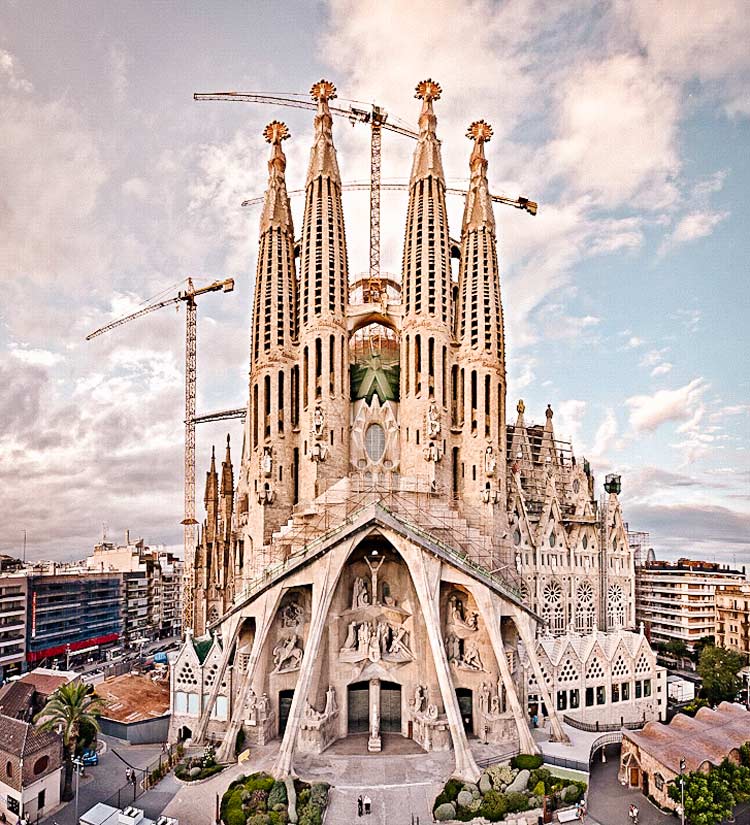About Spain:
Did you know that Spain is one of the most visited countries in the world? There are many reasons, and the best way to find them out for yourself is a trip to Spain. You can visit amazing World Heritage sites, enjoy delicious food, and discover stunning landscapes. In Spain, all the good stories can come true. Get your own story started with some interesting facts and anecdotes about the places that could be your next holiday destination.
Spain's powerful world empire of the 16th and 17th centuries ultimately yielded command of the seas to England. Spain remained neutral during both World Wars but suffered through a devastating civil war (1936-39) resulting in a dictatorship. A peaceful transition to democracy after the death of dictator Francisco FRANCO in 1975 and rapid economic modernization after Spain joined the EU in 1986 gave Spain a dynamic and rapidly growing economy. After a severe recession in the wake of the global financial crisis in 2008, Spain has posted solid years of GDP growth above the EU average. Unemployment has fallen but remains high, especially among youth. Spain is the euro-zone's fourth-largest economy. The country has faced increased domestic turmoil in recent years due to the independence movement in its restive Catalonia region.
The Basílica i Temple Expiatori de la Sagrada Família,[a] otherwise known as Sagrada Família, is a church under construction in the Eixample district of Barcelona, Catalonia, Spain. It is the largest unfinished Catholic church in the world. Designed by Catalan architect Antoni Gaudí (1852–1926), in 2005 his work on Sagrada Família was added to an existing (1984) UNESCO World Heritage Site, "Works of Antoni Gaudí".[4] On 7 November 2010, Pope Benedict XVI consecrated the church and proclaimed it a minor basilica.[5][6][7]
On 19 March 1882, construction of Sagrada Família began under architect Francisco de Paula del Villar. In 1883, when Villar resigned,[4] Gaudí took over as chief architect, transforming the project with his architectural and engineering style, combining Gothic and curvilinear Art Nouveau forms. Gaudí devoted the remainder of his life to the project, and he is buried in the church's crypt. At the time of his death in 1926, less than a quarter of the project was complete.[8]
Relying solely on private donations, Sagrada Família's construction progressed slowly and was interrupted by the Spanish Civil War. In July 1936, anarchists from the FAI set fire to the crypt and broke their way into the workshop, partially destroying Gaudí's original plans.[9] In 1939, Francesc de Paula Quintana took over site management, which was able to go on with the material that was saved from Gaudí's workshop and that was reconstructed from published plans and photographs.[10] Construction resumed to intermittent progress in the 1950s. Advancements in technologies such as computer-aided design and computerised numerical control (CNC) have since enabled faster progress and construction passed the midpoint in 2010. In 2014, it was anticipated that the building would be completed by 2026, the centenary of Gaudí's death,[11] but this schedule was threatened by work slowdowns caused by the 2020–2021 depths of the COVID-19 pandemic.[12] In March 2024, an updated forecast reconfirmed a likely completion of the building in 2026, though the announcement stated that work on sculptures, decorative details and a controversial proposed stairway leading to what will eventually be the main entrance is expected to continue until 2034.[13]
/plaza-de-espa-a-at-dusk--seville--spain-499790854-5aa55d6c1f4e130037937244.jpg)

0 Komentar